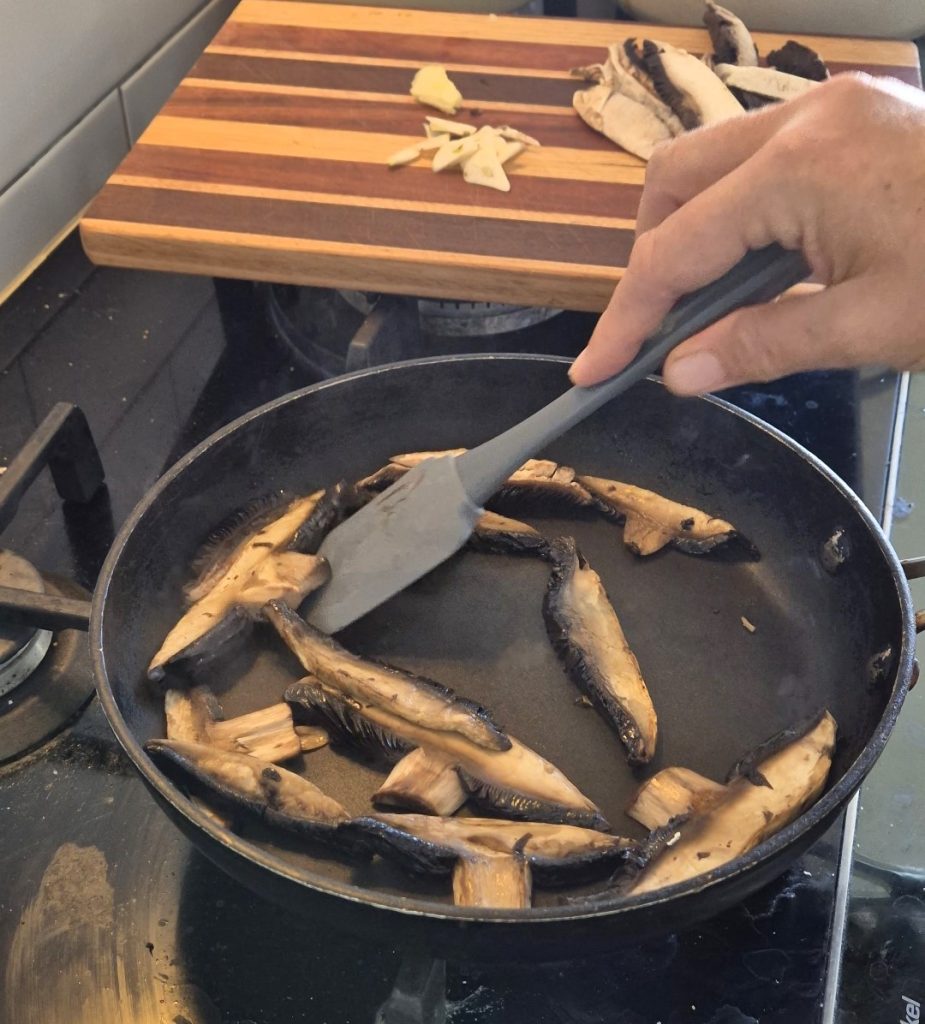
Basic Cooking Techniques 101 – Your Guide to Kitchen Confidence – Saute
Ever wondered why your sauteed vegetables are a soggy mess instead of being a crisp and colourful rainbow? Let’s fix that!
So what is sauteing, when do you do it and what recipes can your practice with?
To saute is to cook over a high heat with a little fat in your pan. You commonly saute vegetables such as mushrooms with butter, green beans with garlic or sometimes a medley of vegetables with a light sauce at the end
So where could you be going wrong? Common mistakes with sauteeting can include:
- Not having your pan hot enough
- Using too much oil or butter
- Over crowding the pan
- A pan that doesn’t hold heat well
Why are these things an issue and how can you fix them?
- Not having your pan hot enough means that when your ingredients go into the pan, instead of starting to brown or caramelise they may just release their water content and start to stew. The high heat of a pan and having hot oil allows your pan to create that beautiful colour that comes from a saute and any water that is released quickly steams away
- Too much oil or fat can be an issue for a few reasons. First you risk burning yourself on the hot fat when you place your ingredients in, the second is the ingredients may end up becoming greasy and unappestising as they absorb the fat and thirdly the oil may not heat evenly in the pan causing uneven browing and cooking
- Overcrowding your pan presents an issue when you pan starts to cool down as it tries to cope with the volume of food in it. The pan is also not able to make contact with the surfaces of all the ingredients leading to uneven cooking and soggy ingredients
- A pan that doesn’t heat evenly and in turn retain that heat can cause issues as you try and add your ingredients and cook them. Pans need to be able to keep hot to maintain that searing contact with the ingredients which creates the beautiful colour and flavour. A pan that cools too quickly or has hot and cold spots will be difficult to control and get right
How do you saute correctly? Follow these steps and you\’re on you way to success
- Heat you pan –allow your pan to heat evenly by placing over a medium high heat.
If your pan is stainless steel to test if it is hot enough you can pour a little water into it before you add any fat (please do not add water to any hot fat – it will spit and sizzle which is a hazard for burns) and if the water disappears as steam it is not hot enough. When the water starts to create little bubbles and dance over the surface it is hot enough. Lower your heat a little, give the pan a minute to adjus
2. Add your fat – add your oil of choice to the pan and allow it to heat. It will start to shimmer slightly when hot. Do not over heat your oil to the point it is smoking. It is too hot and not ideal for cooking anymore
3. Add your ingredients to the pan in small enough batches to not overcrowd the pan. Allow the ingredients to cook and stir to prevent sticking, allowing surfaces to come into contact with the pan
4. Continue to cook the ingredients until either golden brown or firm and cooked through. Add your seasoning or sauce as desired and serve
Now you’re familiar with how to saute let’s get your practicing some recipes with simple saute techniques
- Sauteed mushrooms with garlic butter
- Sauteed chilli prawns
- Sauteed vegetable medley with parsley
So your next question – what is the difference between a saute and a stir fry?
Sauté vs. Stir-Fry
Sauté
- Technique: Food is cooked quickly over a medium to medium-high heat with a small amount of fat
- Pan: Usually a flat and wide pan is used. It can be non stick or stainless steel
- Food Movement: Food is left to brown with stirring only to prevent sticking
- Typical Foods: Vegetables, chicken and seafood. They may be cut slightly thicken or bigger than a stir fry
- Cooking Time: Usually longer than a stir fry to allow for colour to develop on the surfaces
Stir-Fry
- Technique: Food is cooked quickly over a high heat, usually a gas flame
- Pan: Typically a wok is used
- Food Movement: Food is constantly stirred and tossed in the pan to ensure quick and even cooking. The sides of the wok allow for a larger surface area of hot pan to come in contact with the food which creates the stir fry technique
- Typical Foods: Meats, vegetables and tofu, often sliced thin to cook quickly
- Cooking Time: Quick – often only minutes
Key Differences
- Heat Level: Sautéing uses medium to medium-high heat, while stir-frying uses high heat.
- Pan Type: Saute uses a fry pan, Stir fry uses a wok
- Food Movement: Sautéing involves less stirring; stir-frying requires constant movement and tossing
- Cooking Time: Sautéing takes longer; stir-frying is very quick.
Want to master sautéing? Join our beginner cooking class and learn hands-on from our expert chefs!